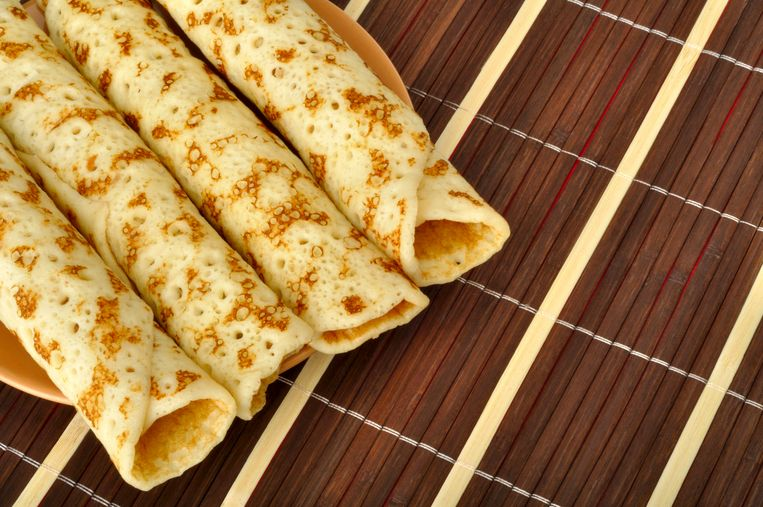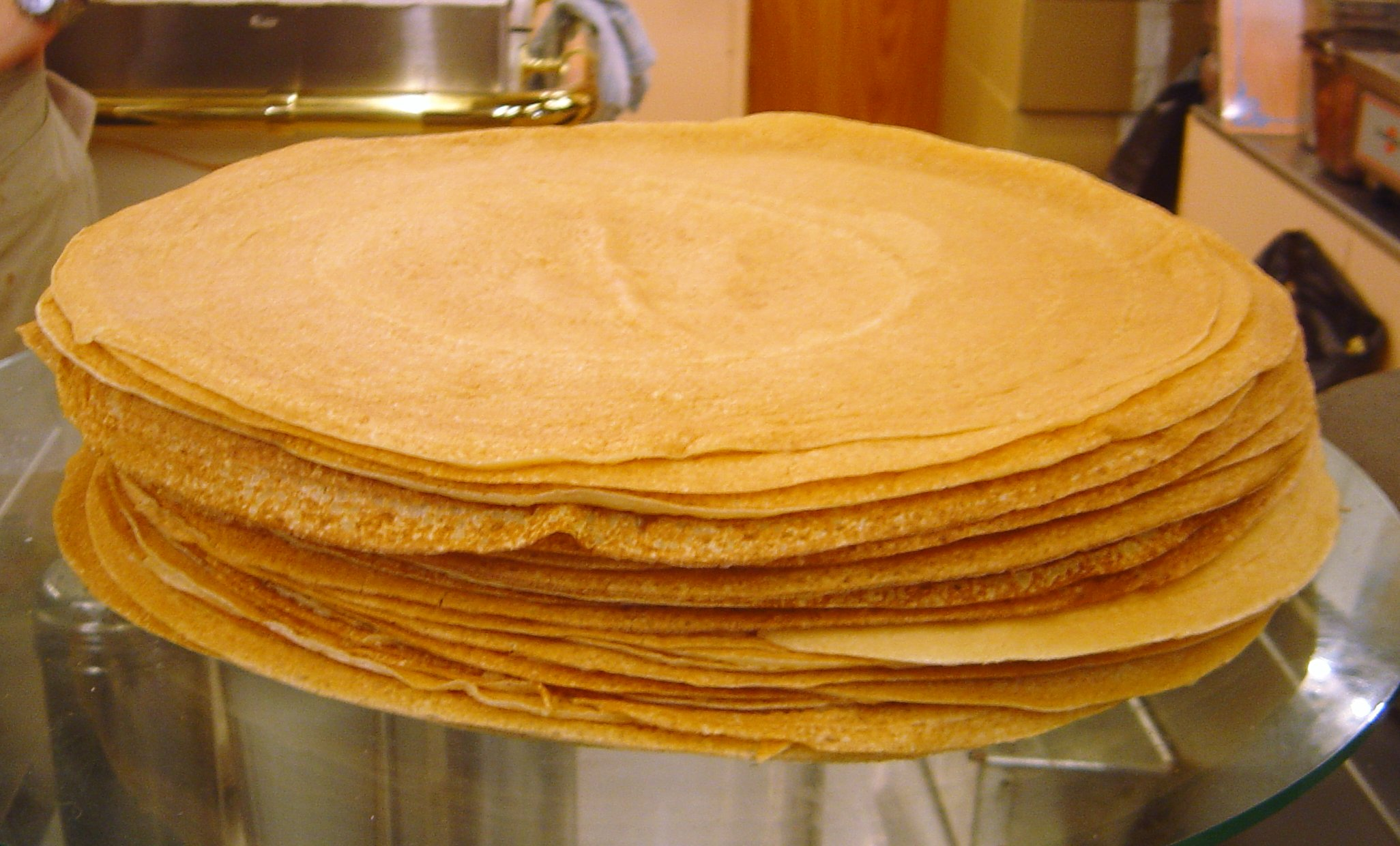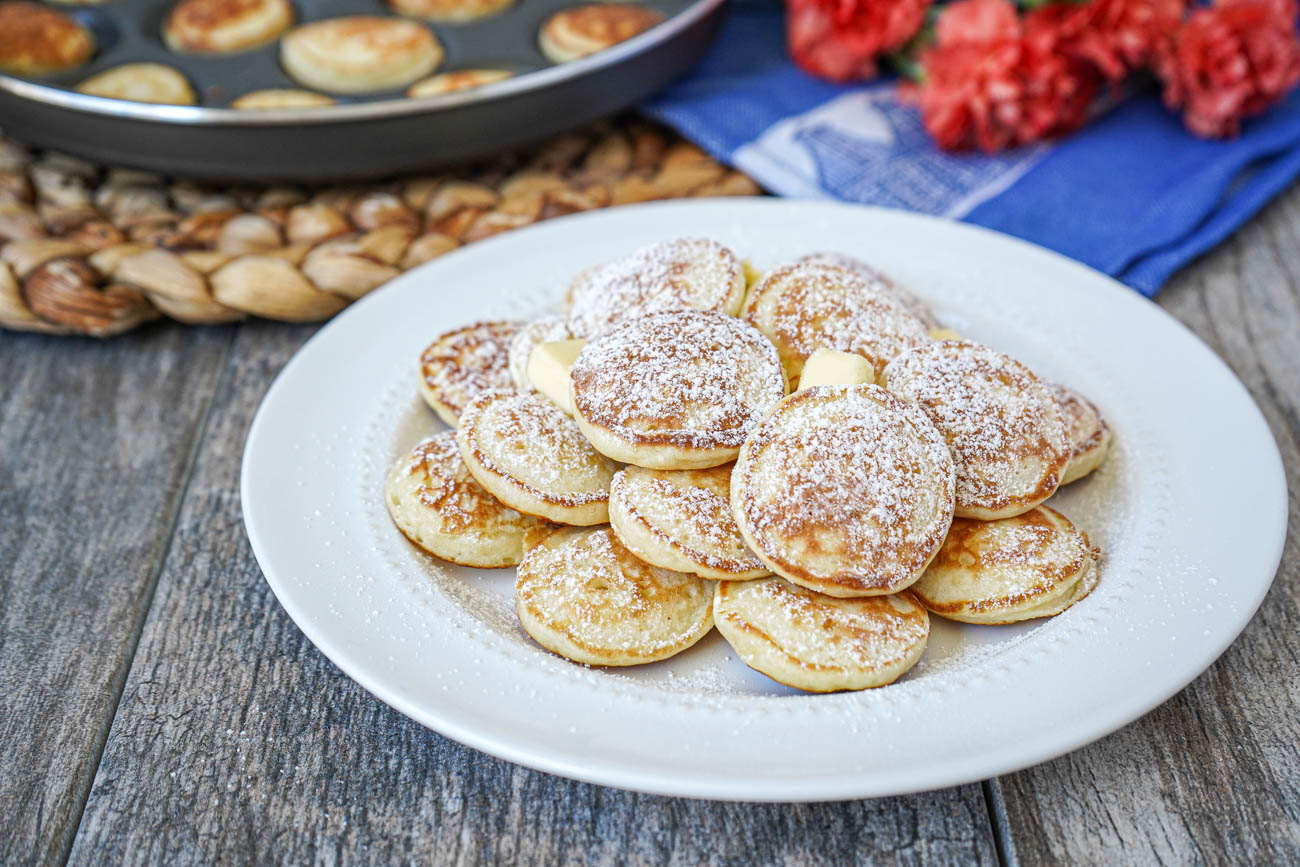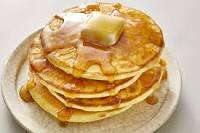Conversation
miifox
miifox
Edited 2 years ago
long post, pancakes at the end!
Show content
I just went on a small bit of a nerdout about pancakes/pannekoeken/crepes, and here are some things I uncovered:
First of all, vocabulary. This is what Dutch call a "Pannekoek". (see attachement 1). It's typically eaten with powered sugar, or syrup (we'll get to that latter a bit later).
This is what the French call a crêpe. (see attachment 2). It's the same size but a bit thinner than the Dutch "Pannekoek", and the Dutch use the word "Crêpe" to refer to the thinner format when it matters in context. It's typically eaten with powered sugar, nutella, or with some alcoholic "Flambée" (flamed). I mostly see the latter rather than the former when going to events.
This is what the Dutch call a "Poffertje" (see attachment 3). It's eaten with powered sugar.
Now I get conflicting results on whether the English "Pancake" refers to 1), 2) or 3). As far as I have been able to make out, the British might have used "Pancake" in the past to refer to 1) (at least that's how I learned it), but what I got confirmation on is that the American "Pancake" would very probably be closer to 3) (but a bit bigger). See attachment 4.
Interestingly, the one American source I have says he mostly eats 2) (and call them "crepes") but also claims that most Americans never even heard of them.
Now I said something about syrups? Let's go to the country I mostly associate with this bakery, Canada.
I lack a source outside of Quebec, but from my sources inside Quebec I gathered that they mostly eat type 2) (tho from experience it might have been closer to type 1), but maybe that was on the cook), and very occasionally type 4). They too use the term Crêpes, of course, and so I asked them what the English-speaking half of Canada refers it with and he said he didn't know for sure, but he seemed to remember they called it "Crepes" with a solid Canadian-English accent.
That confirms indeed that my American source was correct on the name of the bakery, and that it wasn't just because he learned to appreciate them when he was in Paris once. Futhermore, a third (Dutch) source claimed the same, so I declaire it as official, Crêpes refers mostly to the same thing in French, English, and Dutch.
But this whole research was technically not about type 2), it was about type 1) (and kinda type 3)). Because when I was a kid in the Nederlands, it was something for birthdays. For someone else, it was for milestones (which let's face it, a birthday pretty much is). It was eaten at lunch, and it was a whole happening.
The mere thought of people eating "pancakes" for breakfast seemed crazy to me. And yet that seems to be the norm across the ocean, but also among quite a big percentage of Dutch folks (though some *do* eat it as lunch on random days instead). I didn't know that!
Oh bakeries, how many more cultural differences and secrets are there to uncover about you?
Attachement 1: A typical Dutch …
Attachement 2: A French "Crêpe"…
Attachement 3: Dutch "Poffertje…
Attachement 4: American "Pancak…
First of all, vocabulary. This is what Dutch call a "Pannekoek". (see attachement 1). It's typically eaten with powered sugar, or syrup (we'll get to that latter a bit later).
This is what the French call a crêpe. (see attachment 2). It's the same size but a bit thinner than the Dutch "Pannekoek", and the Dutch use the word "Crêpe" to refer to the thinner format when it matters in context. It's typically eaten with powered sugar, nutella, or with some alcoholic "Flambée" (flamed). I mostly see the latter rather than the former when going to events.
This is what the Dutch call a "Poffertje" (see attachment 3). It's eaten with powered sugar.
Now I get conflicting results on whether the English "Pancake" refers to 1), 2) or 3). As far as I have been able to make out, the British might have used "Pancake" in the past to refer to 1) (at least that's how I learned it), but what I got confirmation on is that the American "Pancake" would very probably be closer to 3) (but a bit bigger). See attachment 4.
Interestingly, the one American source I have says he mostly eats 2) (and call them "crepes") but also claims that most Americans never even heard of them.
Now I said something about syrups? Let's go to the country I mostly associate with this bakery, Canada.
I lack a source outside of Quebec, but from my sources inside Quebec I gathered that they mostly eat type 2) (tho from experience it might have been closer to type 1), but maybe that was on the cook), and very occasionally type 4). They too use the term Crêpes, of course, and so I asked them what the English-speaking half of Canada refers it with and he said he didn't know for sure, but he seemed to remember they called it "Crepes" with a solid Canadian-English accent.
That confirms indeed that my American source was correct on the name of the bakery, and that it wasn't just because he learned to appreciate them when he was in Paris once. Futhermore, a third (Dutch) source claimed the same, so I declaire it as official, Crêpes refers mostly to the same thing in French, English, and Dutch.
But this whole research was technically not about type 2), it was about type 1) (and kinda type 3)). Because when I was a kid in the Nederlands, it was something for birthdays. For someone else, it was for milestones (which let's face it, a birthday pretty much is). It was eaten at lunch, and it was a whole happening.
The mere thought of people eating "pancakes" for breakfast seemed crazy to me. And yet that seems to be the norm across the ocean, but also among quite a big percentage of Dutch folks (though some *do* eat it as lunch on random days instead). I didn't know that!
Oh bakeries, how many more cultural differences and secrets are there to uncover about you?
Attachement 1: A typical Dutch …
Attachement 2: A French "Crêpe"…
Attachement 3: Dutch "Poffertje…
Attachement 4: American "Pancak…



